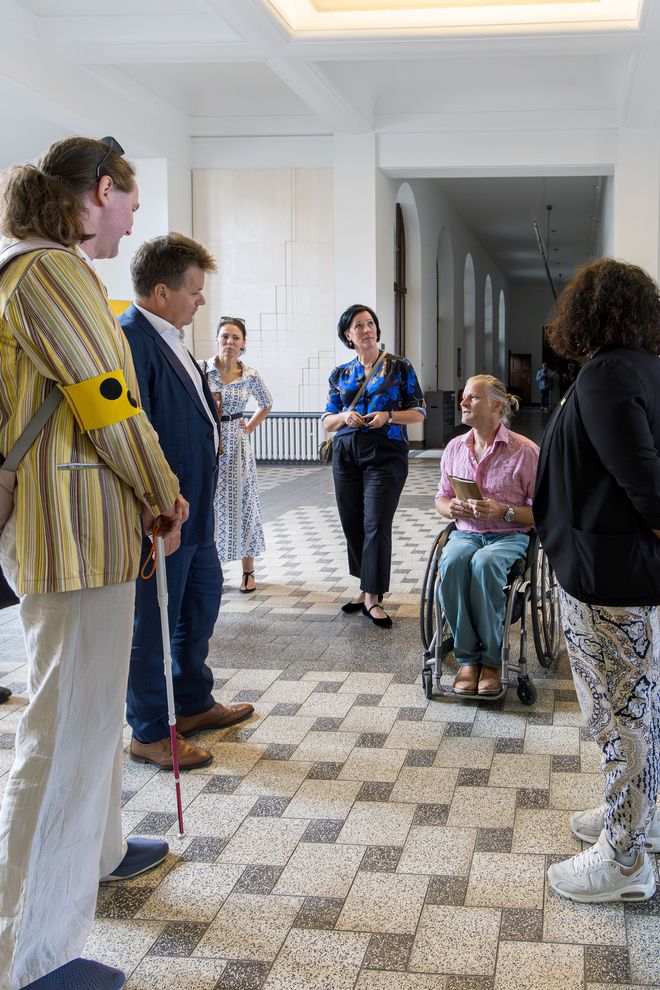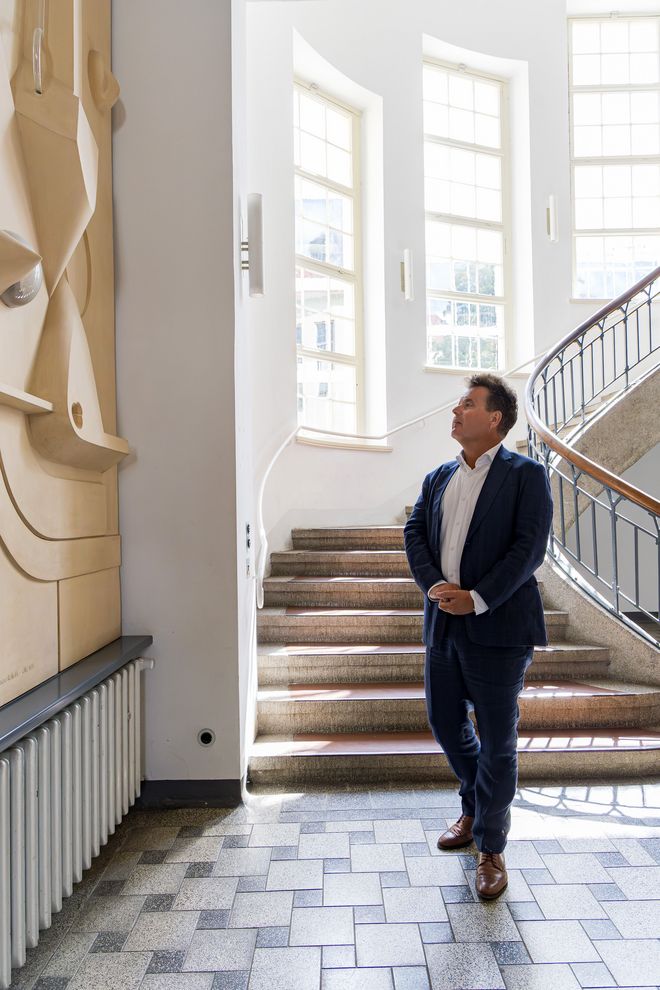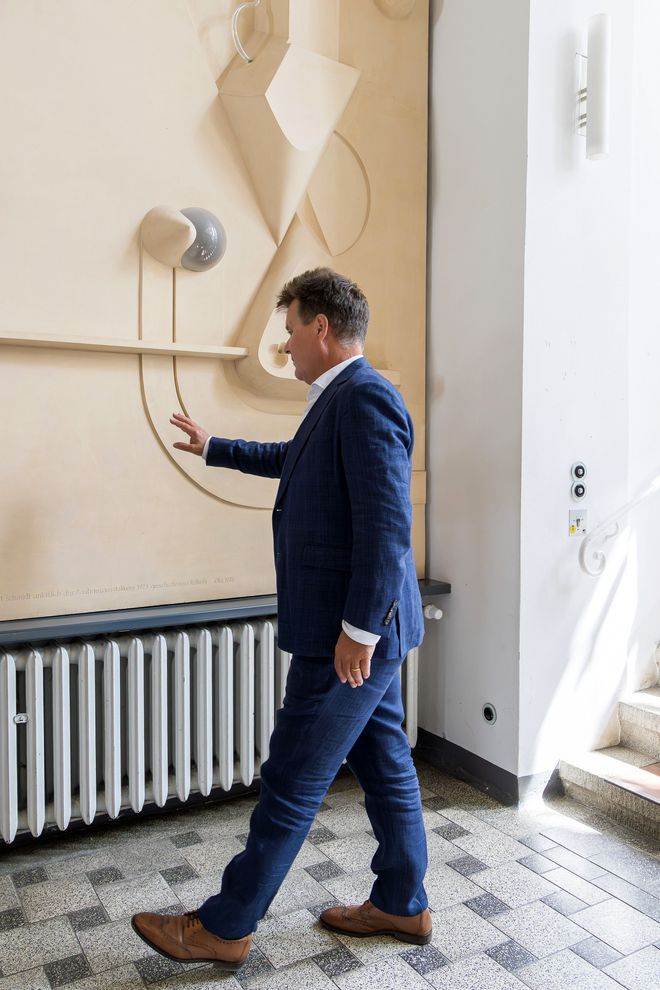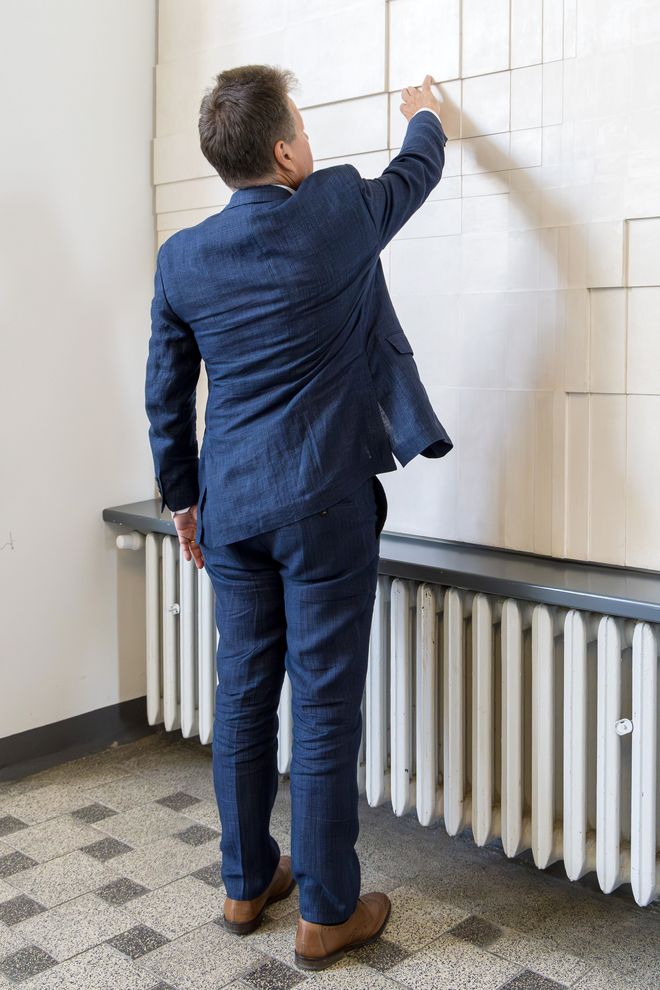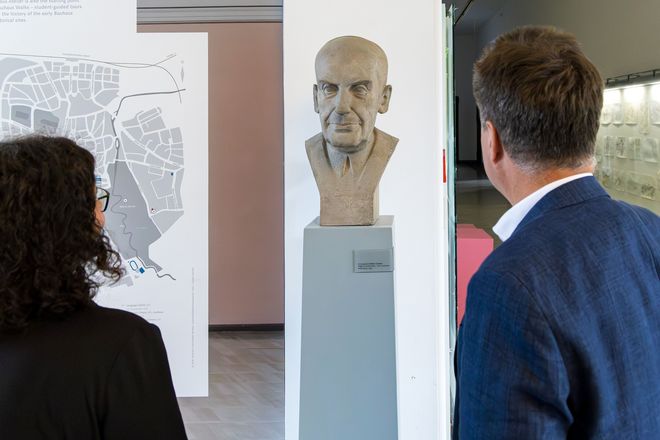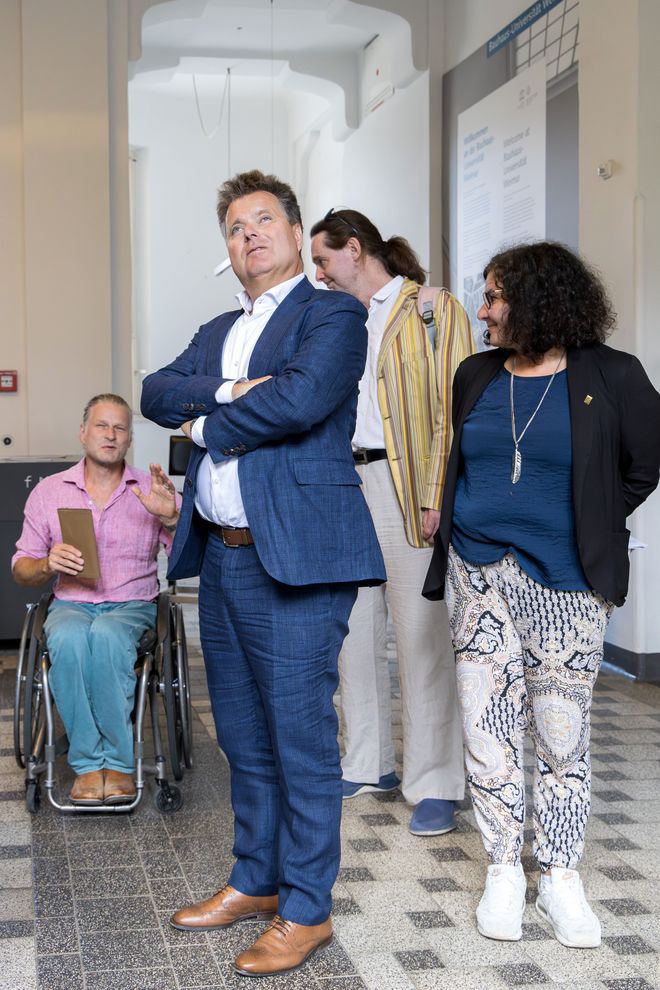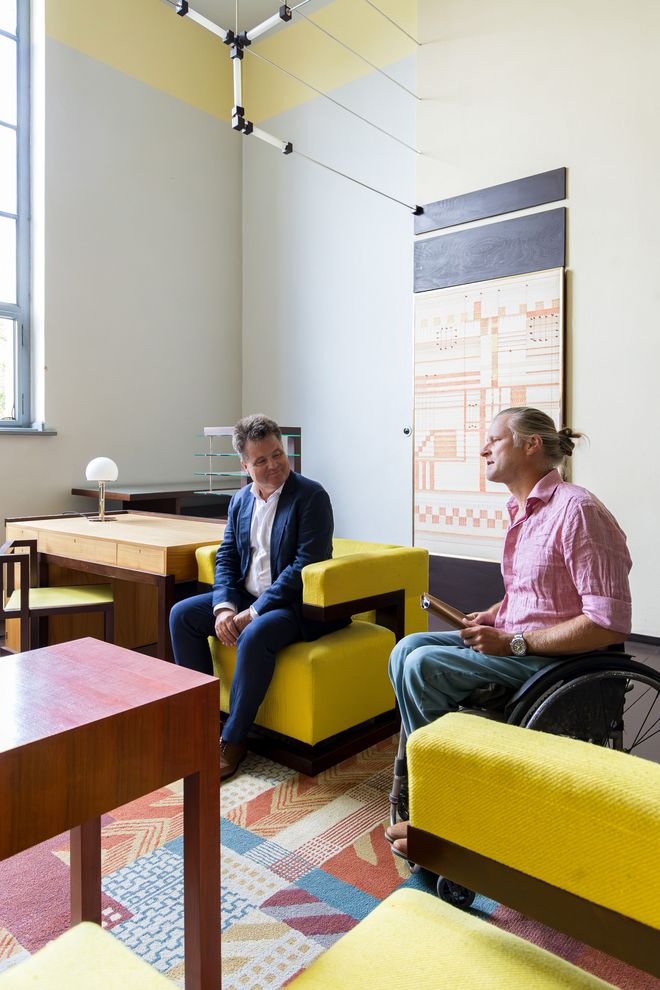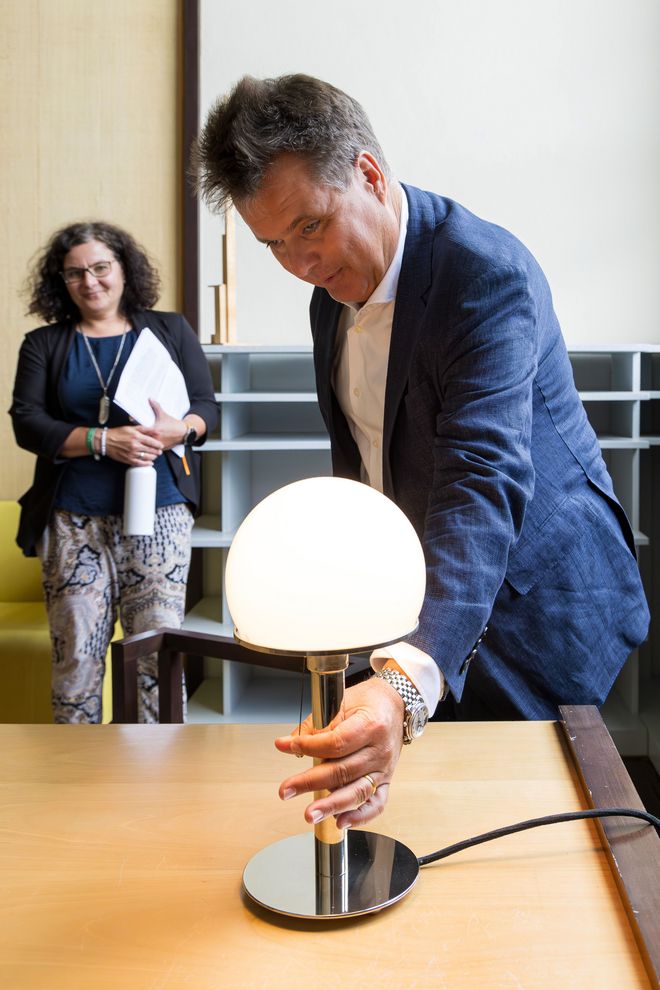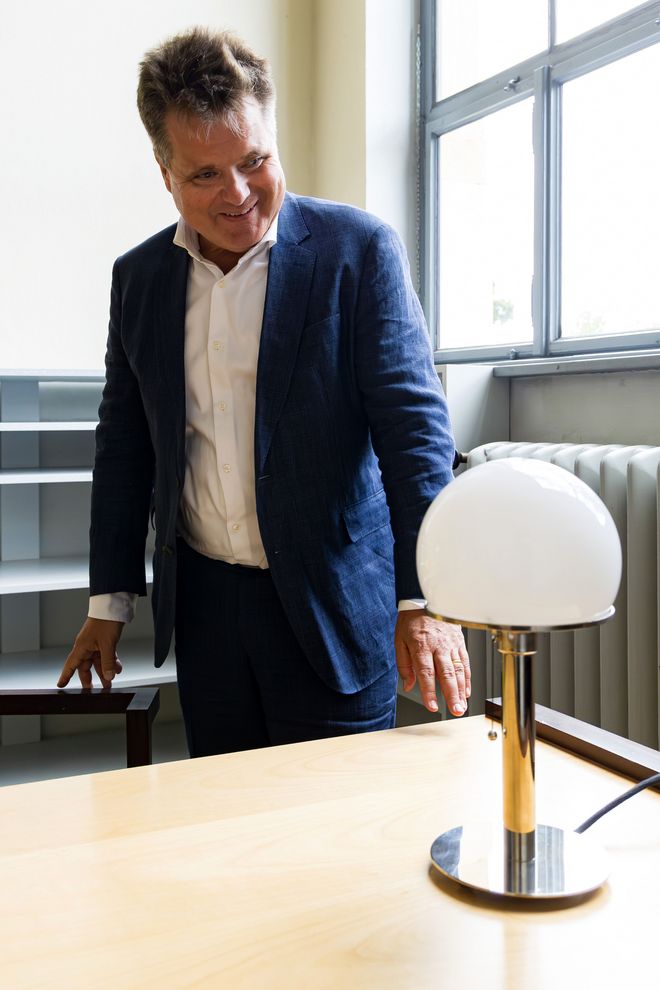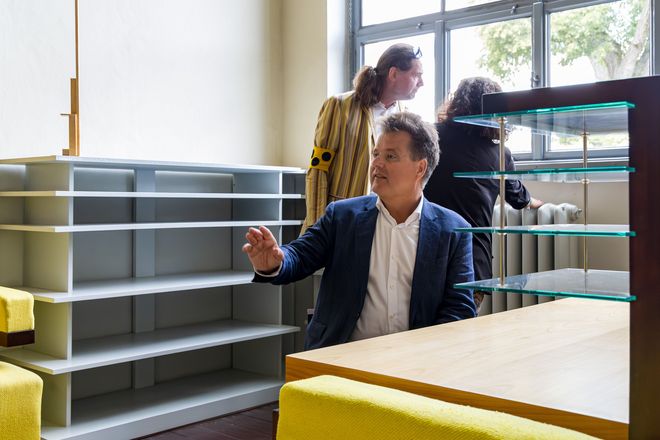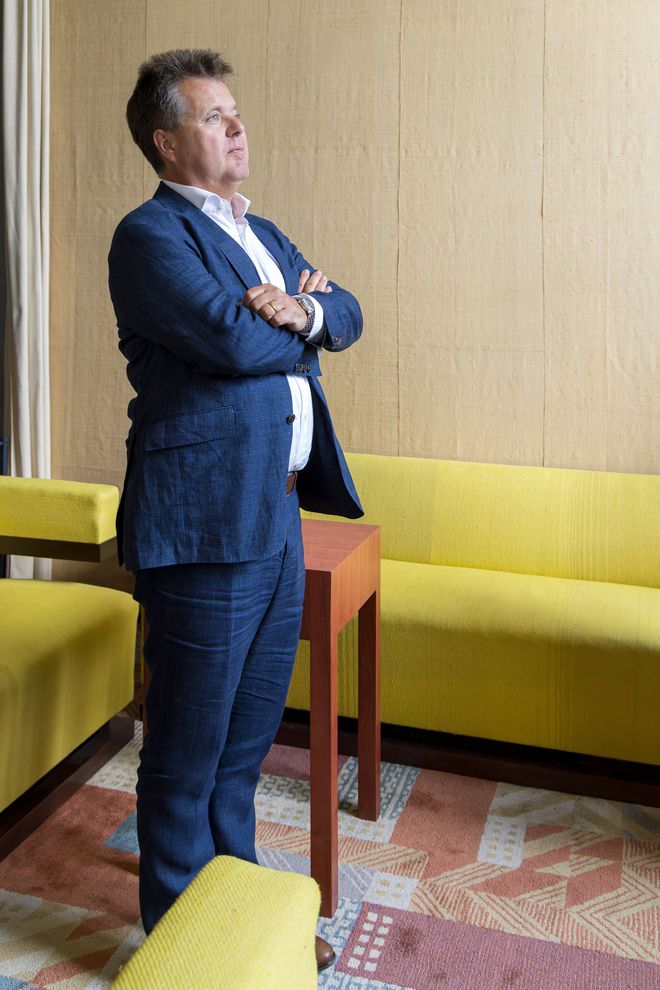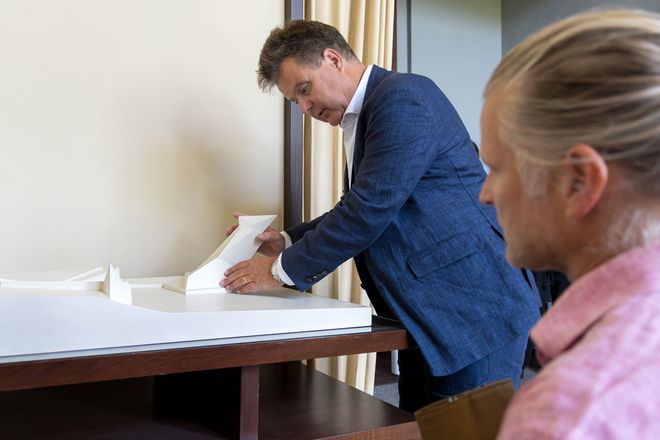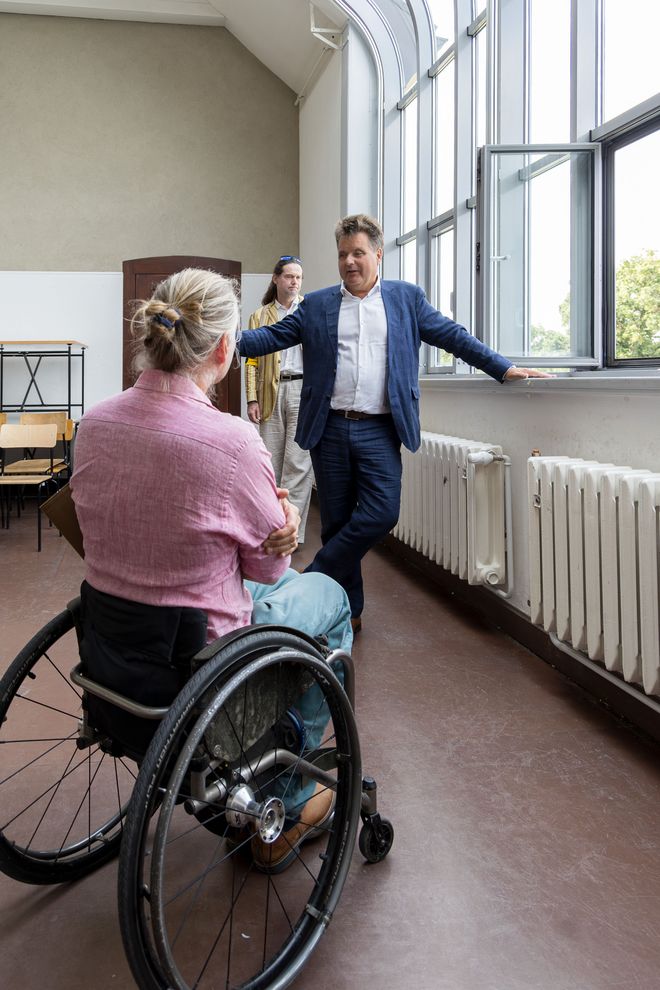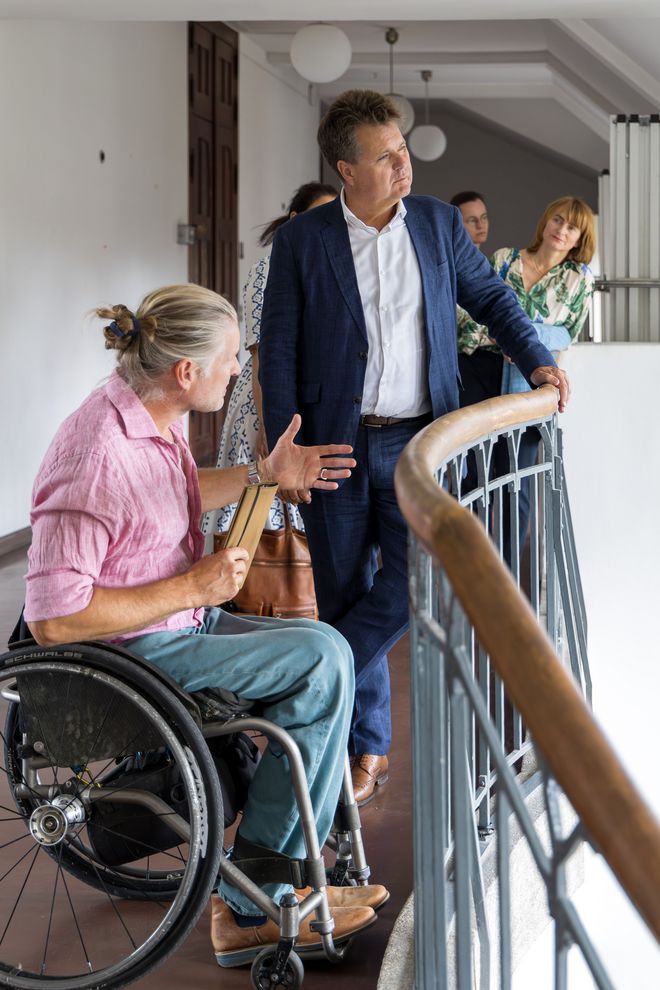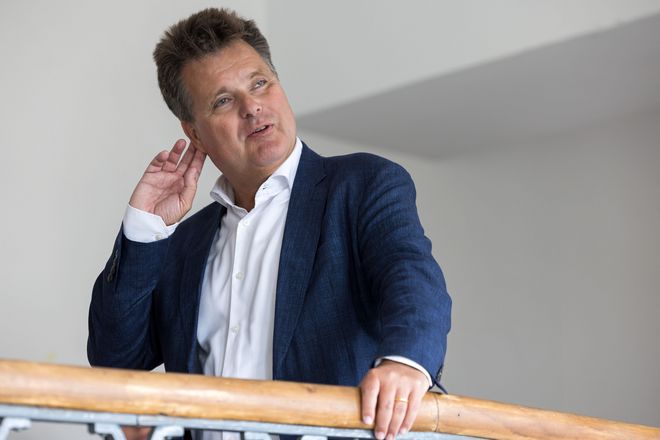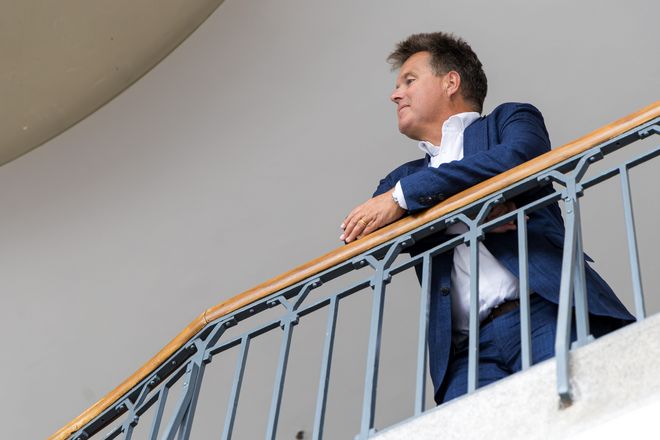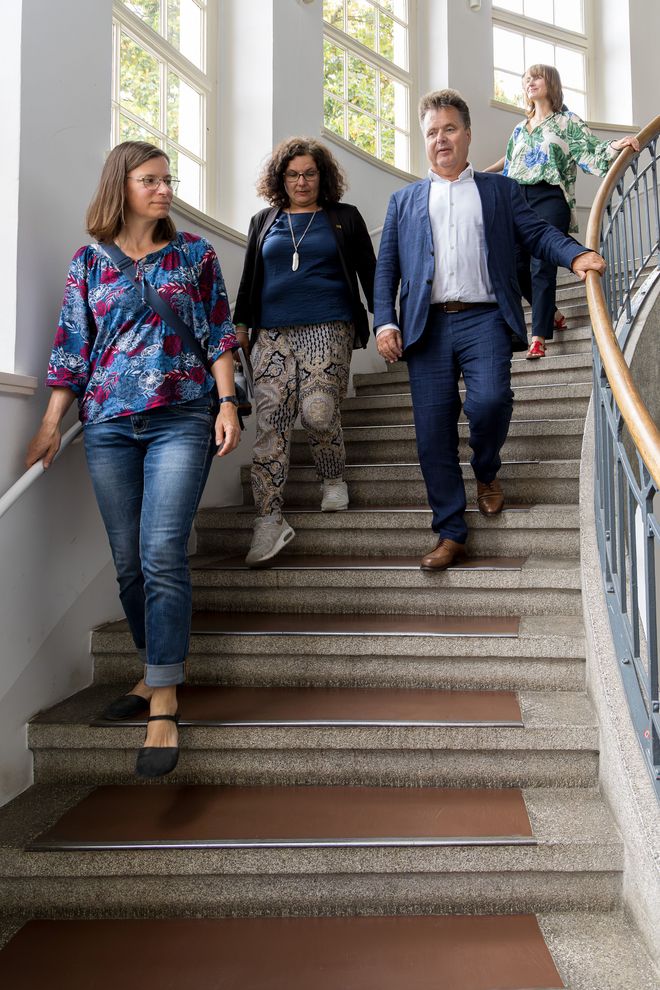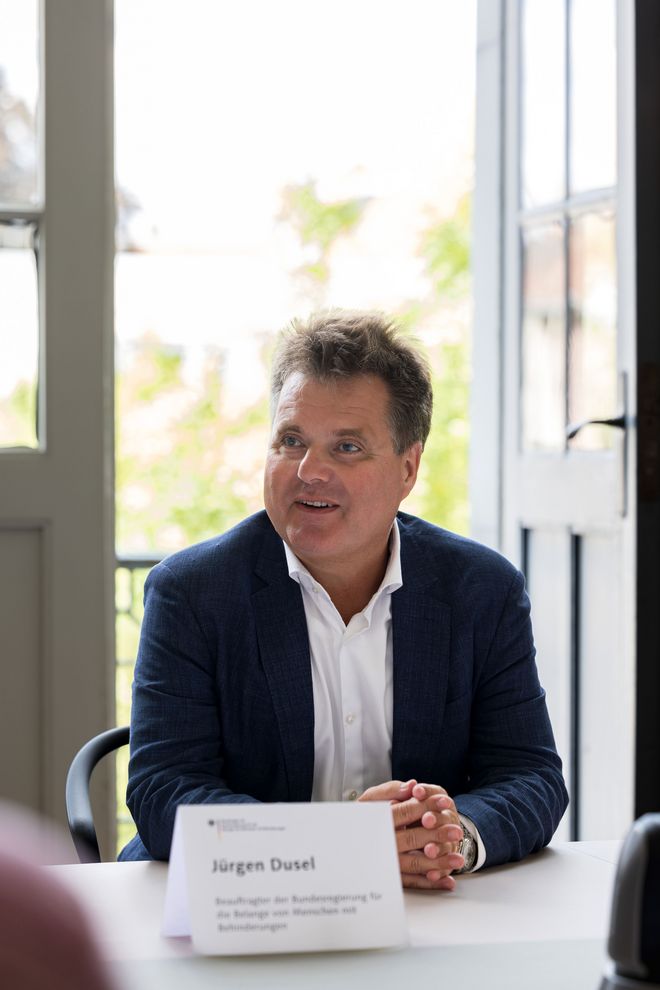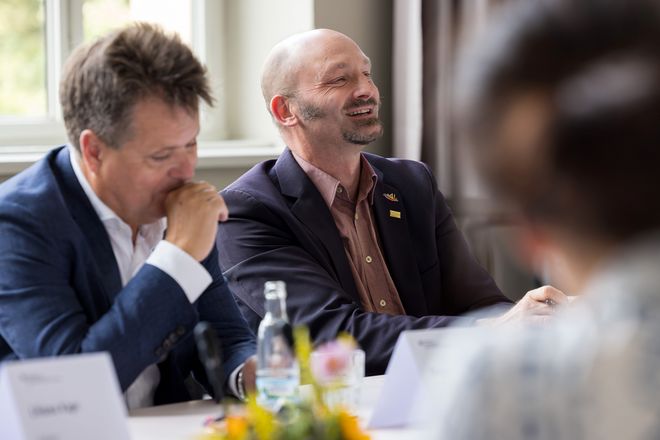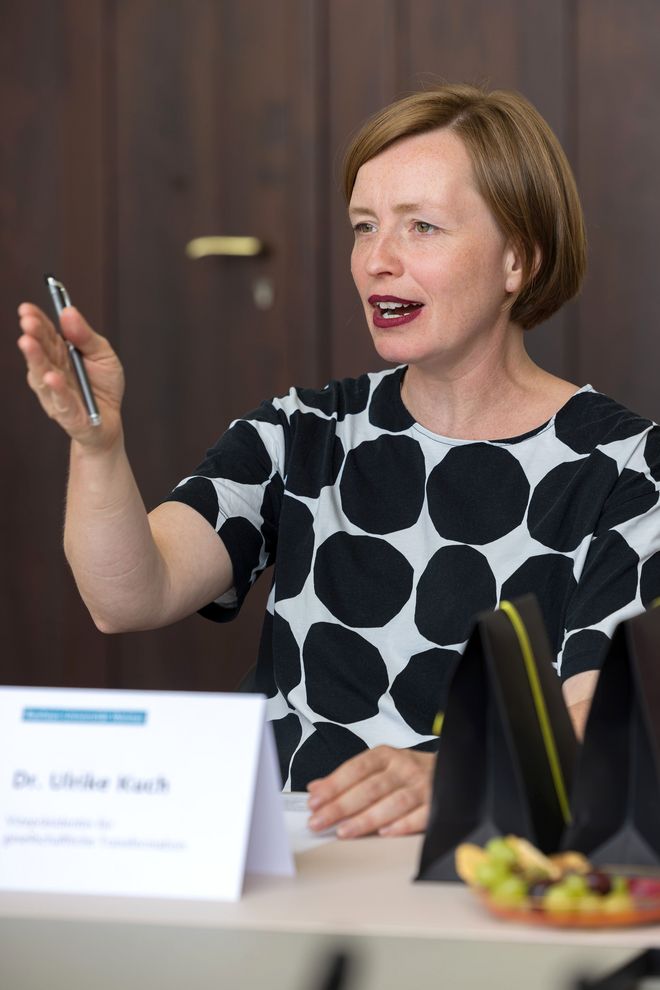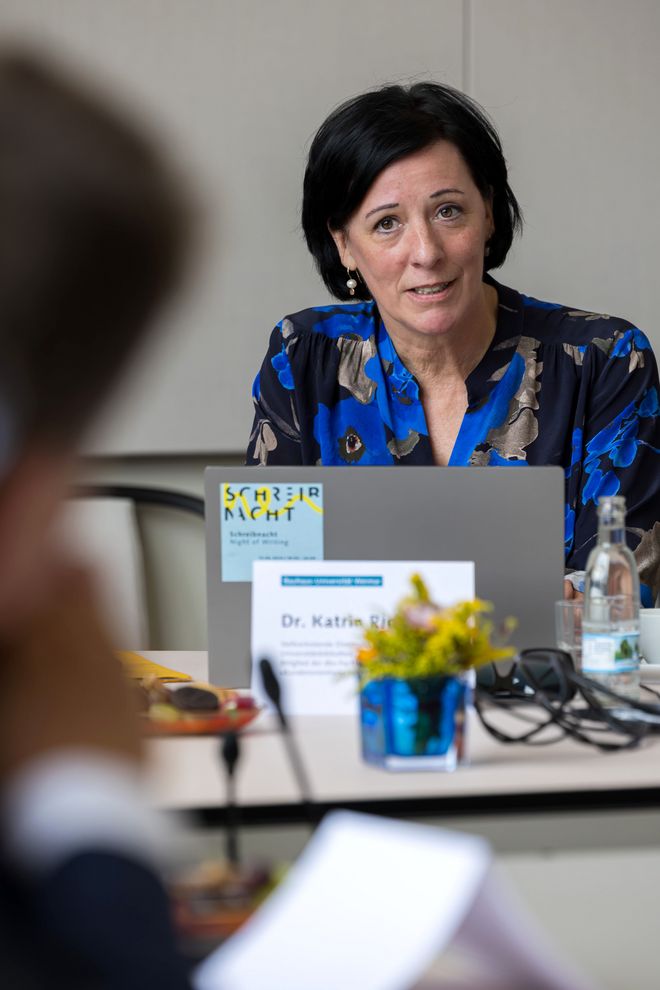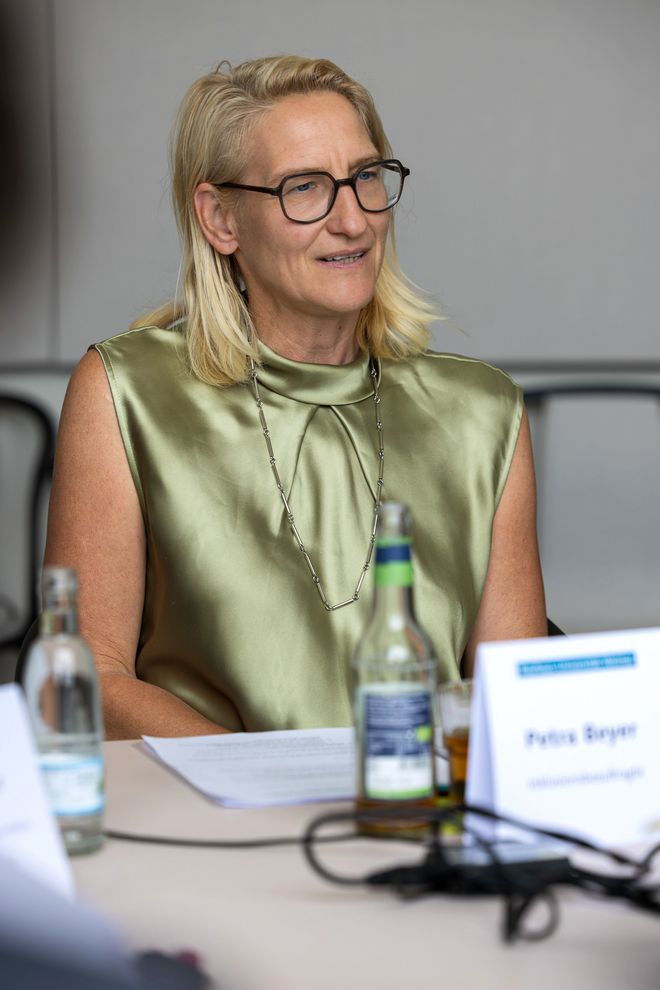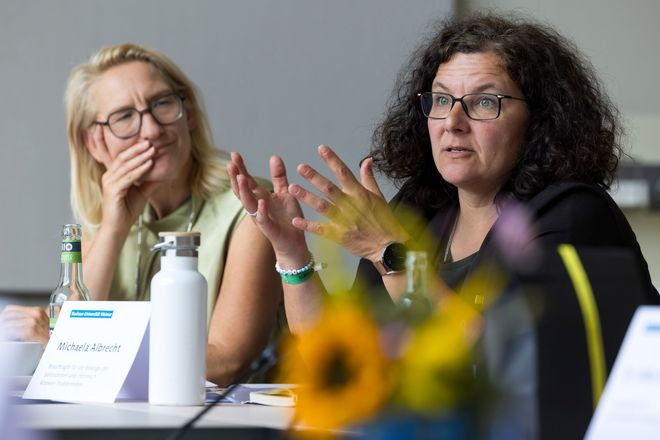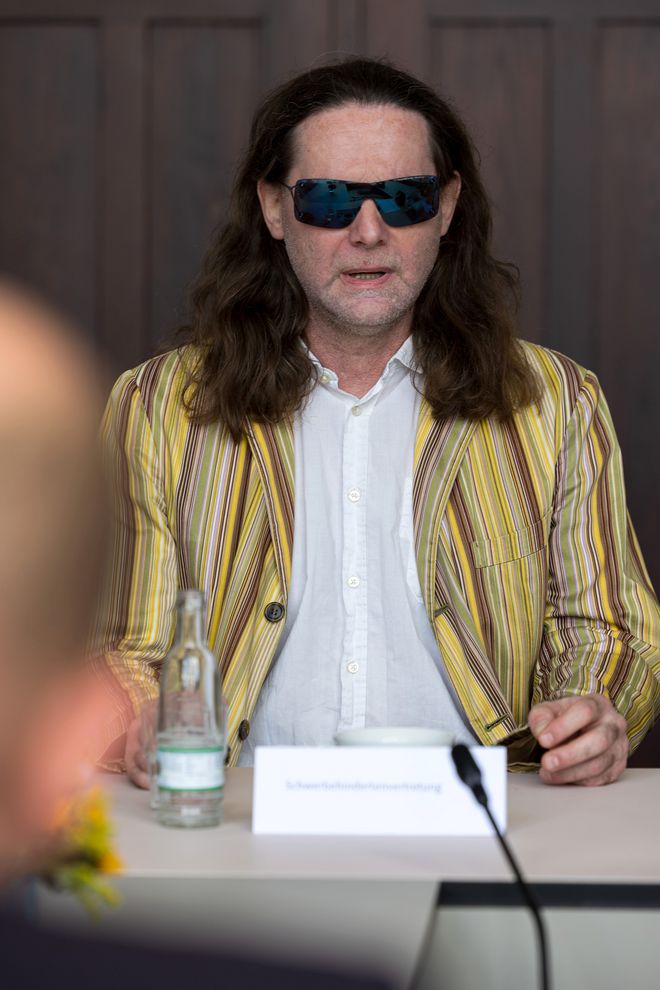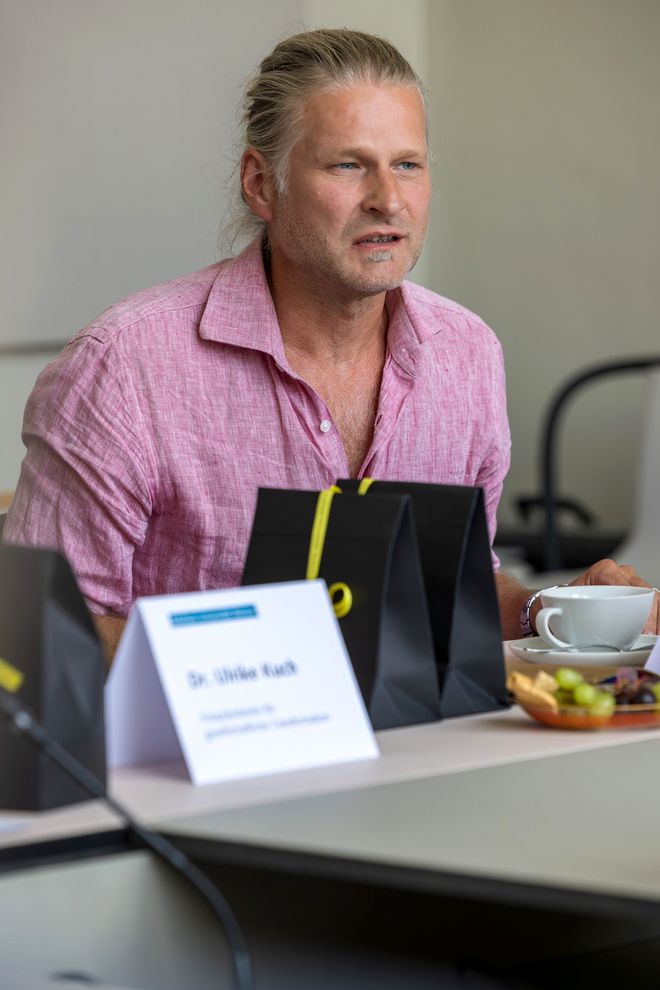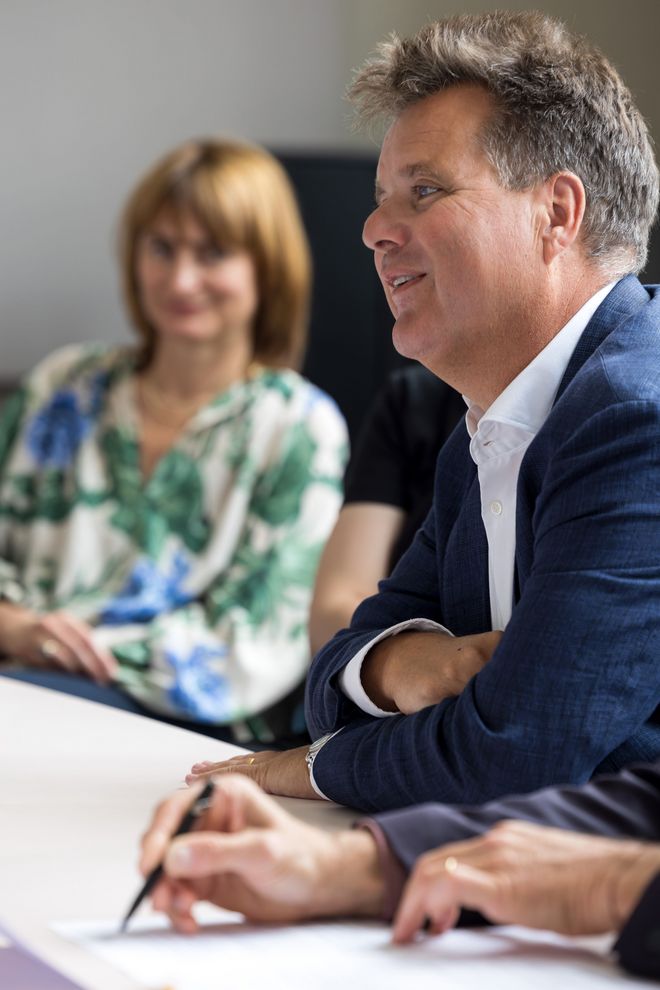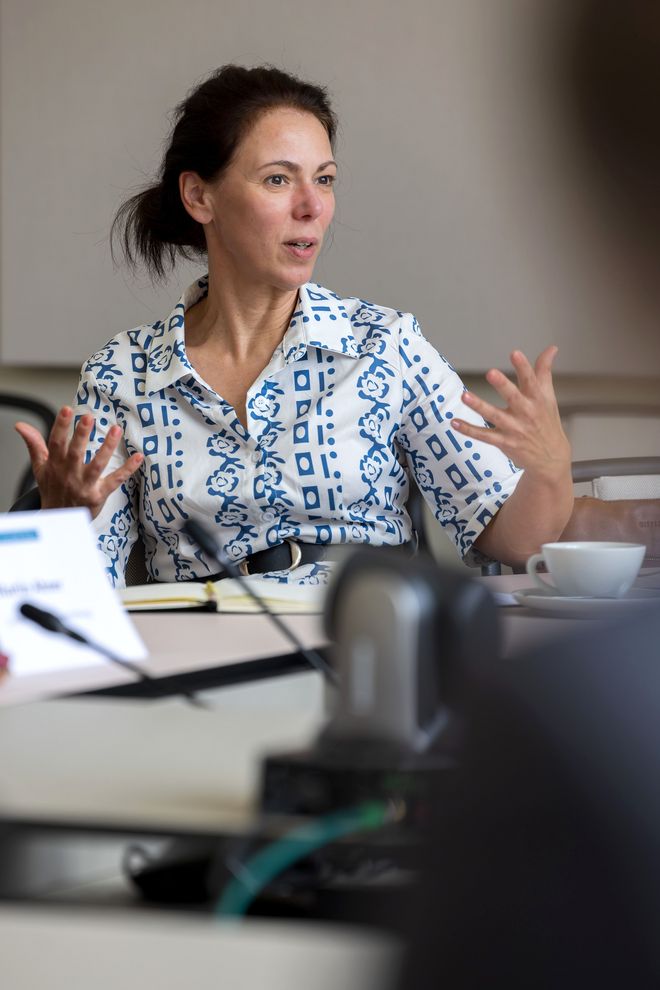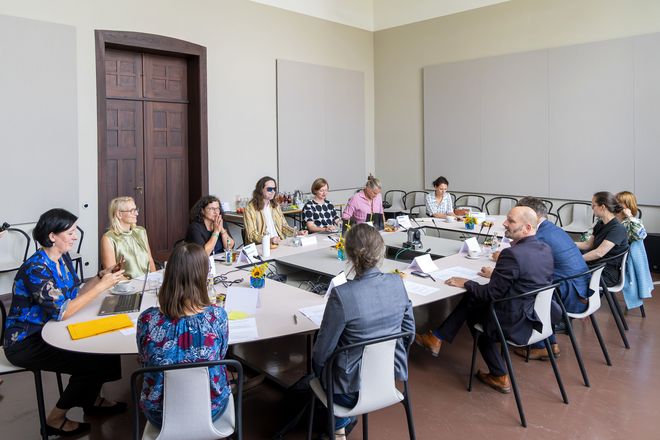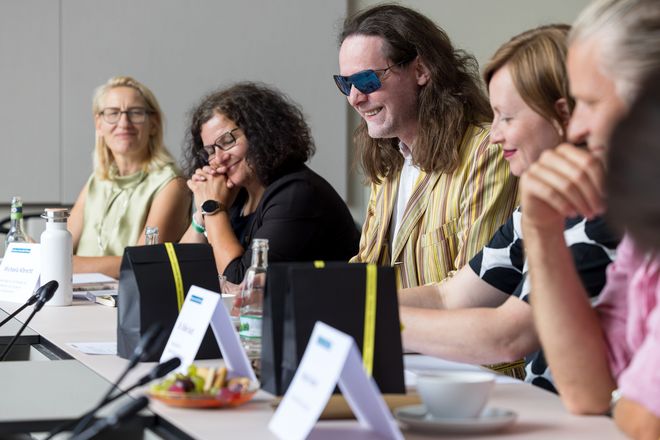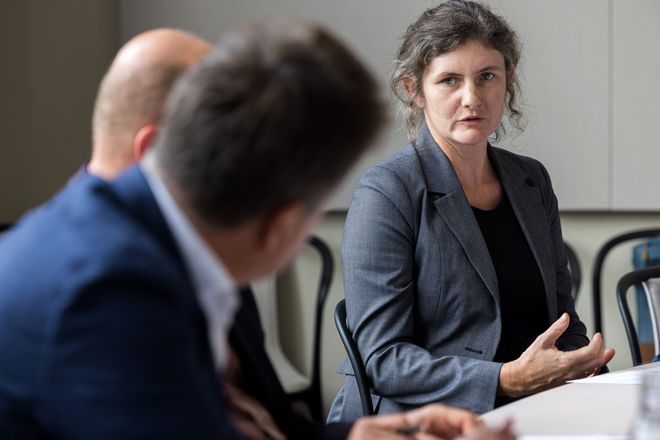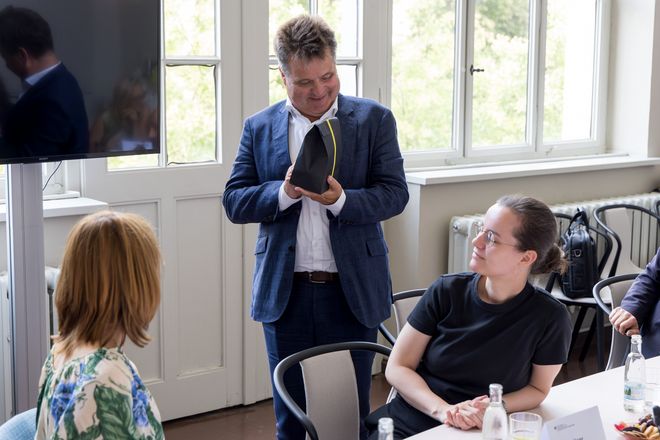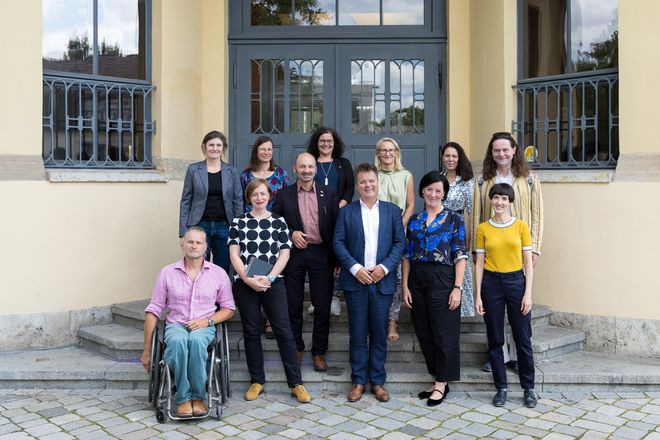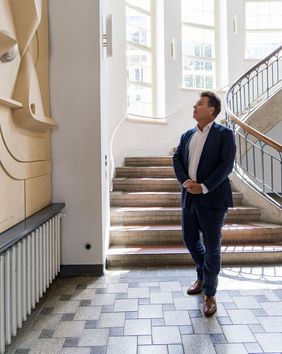
»Democracy and inclusion are inextricably linked«
Jürgen Dusel was in Weimar for the art festival and the event »WE CANNOT IGNORE ME/CFS«. He gladly accepted the invitation from the Bauhaus-Universität Weimar to visit the UNESCO World Heritage Ensemble and discuss inclusion and accessibility with members of the university. Dusel was accompanied by his assistant Liliana Kapr and his press and PR officer Franziska Schönberner.
Accessibility in listed buildings: tour of the main building
After being welcomed by a small group, the Federal Commissioner was given a tour of the main building by Martin Ahner, who is a research assistant at the university and a representative for individuals with disabilities. Ahner shared anecdotes from the famous building’s history and explained details of van de Velde’s architecture. The tour also focused on functionality – how much accessibility does a listed building actually allow and what compromises are possible? A visit to the Director’s Office formed one highlight. Dusel was particularly interested in and enthusiastic about its history and furnishings. The delegation also visited one of the architecture studios on the first floor, where Dusel was impressed by the high, curved windows.
Discussion on inclusion and accessibility at the Bauhaus-Universität Weimar
After the hour-long tour, a larger group came together to discuss how inclusion and accessibility can be implemented in practice and developed further at the Bauhaus-Universität Weimar. Dr Simon Frisch (Vice President of Student and Academic Affairs), Dr Ulrike Kuch (Vice President for Social Transformation), Petra Beyer (Inclusion Officer), Dr Miriam Benteler (Diversity Officer), Christiane Hempel (Digital Accessibility Process Designer), Martin Ahnerand Gunter Seidel (Representative for Individuals with Disabilities) and Michaela Albrecht (Representative for Students with Chronic Illnesses and Disabilities) took part in the discussion.
The focus was on structural improvements to foster inclusion, structural and digital accessibility and future measures. Dusel once again emphasised that inclusion is just not an issue faced by marginal groups. »Around 13 million people in this country have a disability or impairment. Most are not born with it, but only acquire it in adulthood, very often after an illness. Anyone can be affected and no one should be excluded from social participation. The concept of inclusion is inextricably linked to the principle of democracy,« says Dusel.
He was particularly interested in the structures in place at the university that encourage inclusion (»Are they prioritised on the top management level?«) and asked about the acceptance of inclusive measures among the university community. The participants reported on specific projects and measures in their areas and concluded that overall, the situation is positive, though »room for improvement« does still exist.
Inclusion in everyday life: counselling, digital accessibility and inclusive teaching concepts
Miriam Benteler reported on countless initiatives she has set up in recent years, including the Diversity Guides, students who assist their peers by providing information. Websites, flyers and event programmes have also been created. Michaela Albrecht reported that teachers frequently ask for her input on how to make their courses more inclusive. Christiane Hempel explained measures that enable digital accessibility, for example in online teaching, and described how she was closely involved in the upcoming relaunch of the university website – an important step. It became clear that aspects of inclusion are as diverse as life itself: architecture, language, visual elements, presentations, guidance systems – the university is able to gradually increase the accessibility of its programmes. It was also observed that neurodiversity is playing an increasingly important role in diversity considerations. Dusel suggested making recruitment processes more inclusive, for example by adapting the format used for calls for applications or giving serious consideration to how persons with disabilities can be included in the world of work. Everyone’s work would be truly enriched if this could be achieved.
Overall, Dusel was pleasantly surprised by the variety of topics tackled at the university and emphasised that a high degree of inclusion is also a sign of quality for an institution and society as a whole. »Architecture that is built today and does not consider inclusion is simply unprofessional,« he stated. He reminded the group that Germany was one of the 195 countries to ratify the UN Convention on the Rights of Persons with Disabilities (CRPD) in 2009. »This is applicable law that must be implemented – many people forget this,« Dusel commented.
One of the central ideas that emerged from the discussion was that inclusion is not just there to make life easier for people with disabilities, but for all people. Inhibitions and mental barriers are broken down and friendships can develop through everyday encounters. Only when accessibility and inclusion are no longer perceived as something additional or special in everyday life, but rather as something entirely normal and life together »just works« can inclusion truly be considered a success.
The visit was organised by Dr. Katrin Richter, Deputy Director of the University Library at the Bauhaus-Universität Weimar.

